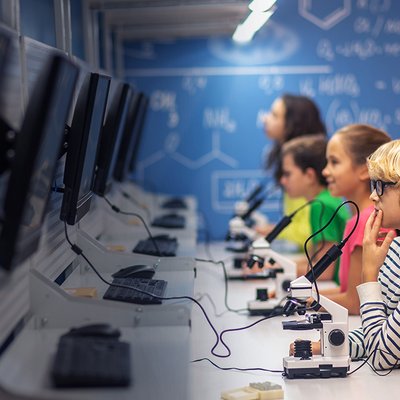Let’s find out: what is Gamification and its role in the modern life
Gamification motivates people to achieve goals and increase productivity. Let’s see where it came from and why it is a new trend in many areas of life.
Feb. 23, 2023

Microlearning is quickly becoming a new trend in Educational Technologies. Thus, by 2024, the market is expected to reach $2.7 billion with an average annual growth rate of 13-15%.
Microlearning allows to improve the quality of learning by 17%, and to increase the level of user involvement by 50%.
In addition, this format is particularly suitable for the corporate segment, which seeks to provide on-the-job training. In microlearning, each program module takes anywhere from 3-5 minutes up to 1-2 hours, and allows the employee to acquire and consolidate useful skills. This is one of the reasons why Google, IBM, CISCO, Unilever, and other corporations are already actively implementing this technique.
So, what is Microlearning?
Microlearning is gaining in popularity every year. The modern pace of life is very rapid, and it is becoming increasingly difficult to devote time to anything. This also applies to the educational sphere: there is no time to learn, and knowledge is always needed quickly. This is what led to the popularity of microlearning, where information is provided in small blocks and contains only the essentials. The learning process with this format is divided into short interval sessions. In contrast to most educational programs, the main goal of microlearning is to obtain and practice a particular skill. To increase the involvement, elements of gamification are used.
Moreover, the format allows you to learn literally everywhere: during a trip on the metro, work breaks, or waiting for your order at a restaurant. And this is the main principle of this approach—to give the student the opportunity to receive information when and where they want. For example, Langly App provides an opportunity to study the English language everywhere, even in short periods of time.

Methods of Microlearning
There are several methods and forms used in the process of microlearning:
Applications
According to statistics, educational applications are the second most popular among Android users and third among iOS users. They allow you to turn a smartphone into an educational center, combining all the techniques of modern microlearning.
Videos
They combine the advantages of both visual and audio content, allowing you to communicate information in a fast and understandable way. Short video clips containing concentrated information with entertaining elements have a greater effect than a written source. In addition, such material is easier to distribute.
Games
According to a recent study by an international team from Greece, Finland, and China, gameplay increases the efficiency of the educational process by almost 35%. Fast, five-minute games allow students to recall and repeat the covered material; and adding goals for the day, ratings, and challenges helps keep the process alive.
Infographics
The visual form, allowing for at-a-glance understanding of the covered topics, makes the material more memorable.
Social Media
Its use as part of the learning process not only ensures fast delivery of content but also promotes the formation of a community of like-minded people.
In conclusion, several features of Microlearning: